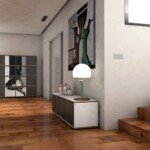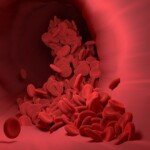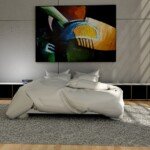Riding the Wave of Innovation: How CNC machining converts surfboard making
For decades, the art of surfboard shaping has been a sacred, sweaty ritual. Master craftsmen waving their cell phones and sandpaper, turning intuition and experience into foam under their feet. Now a quiet revolution is reshaping the lineup, which is Five-axis CNC machining. At Greatlight, we are at the forefront of this development, providing surfboard designers and manufacturers with the cutting-edge technology needed to create high-performance, consistent and innovative boards that push the boundaries of wave riding.
From hand-shaping to digital precision: earthquake transition
The transition from hand-shaping to CNC is not only incremental; it is transformative. Although traditional methods rely on the stable hands of the shaman and profound experience (an irreplaceable form of art), they introduce inherent challenges:
- Variability: Achieve absolute consistency between the two "Exactly the same" The hand plate is very difficult.
- Design and implementation: Converting CAD software from CAD software to foam with perfect symmetry and rocker curve is a huge manual task.
- Time and scalability: Each board is a substantial investment in time, limiting production capacity and increasing costs.
- waste: Hand-shaped can generate a lot of waste of foam dust and increase the risk of substance use by mistake.
CNC machining directly addresses these limitations. By using 3D digital models and computer-controlled cutting tools, manufacturers gain unprecedented control over the geometry of the plate. However, 3-axis CNC machines still have limitations when dealing with complex compound curves and undercuts of high-performance surfboards (such as deep concaves or channels). Entering a game changer: 5-axis CNC machining.
Why five-axis CNC is the gold standard for surfboard processing
Unlike a 3-axis machine (a cutting tool that moves linearly along the x, y and z axes), Five-axis CNC machine Two additional rotation axes (usually A and B) are provided. This seemingly small upgrade unleashes huge potential:
- Unparalleled complex curve processing: The cutting tool can approach the foam blank from almost any angle. This is essential for perfectly engraving complex features such as deep concave surfaces, channels, rail transitions and complex tail shapes without tedious repositioning or manual decoration.
- Top surface finish: Continuous, smooth tool paths resulting in near mesh blanks through simultaneous 5-axis motion require a significant reduction in post-surgery polishing. This preserves bubble integrity and reduces labor.
- Accurate accuracy and repeatability: Each millimeter rocker, each subtle groove, each subtle groove is copied with microscopic accuracy on every board of every digital file machining. Ensure consistency.
- Efficiency and waste reduction: Optimized tool path minimizes machining time. Precise cutting greatly reduces foam waste and reduces the risk of errors that destroy blanks compared to manual shaping.
- Design free release: Shapers and designers are no longer limited by easy manual implementation. True aggressive performance concepts, tuned fluid dynamic shapes and custom designs become manufacturable reality.
CNC Surfboard Making Process: Step by Step (Powered by Greatlight)
At Greatlight, our five-axis CNC machining service simplifies and enhances surfboard production pipelines:
- Digital design: The process begins with shaping/designers using dedicated CAD (computer-aided design) surfboard software (e.g., Shape3D, BoardCad) to carefully create 3D models of the board. Each dimension, curve and outline are numerically defined.
- Cam Programming: CAD files are imported into CAM (Computer Aided Manufacturing) software. Here, Greatlight engineers program the best tool paths. This involves selecting cutting tools, defining feed rates, spindle speeds, and critically formulating the complex multi-axis motion required to effectively and accurately machining complex shapes. Deep expertise in foam processing is essential to prevent tearing or melting.
- Protect the blanks: The original surfboard blank (usually polyurethane (PU) or extended polystyrene (EPS) foam) is securely mounted on the machine using a specialized vacuum fixture designed to secure the blank when cut aggressively without deformation.
- Five-axis machining execution: Our advanced five-axis CNC machine is still alive. Under the guidance of the CAM program, the cutting tool moves dynamically and rotates with incredible accuracy and carves the foam after the exact digital blueprint. The final shape can be effectively implemented using multiple tools (roughing machines, organizers).
- Postoperative treatment: The processed blank is very close to the final shape (near mesh shape). Although significantly smaller than the hand shape, minimal sanding is required to remove the glass and remove tiny tool markings or processing lines (laminated with fiberglass and resin) before the finishing process begins. Greatlight also offers optional one-stop post-processing support.
Beyond Foam: Custom made materials versatility
While foam surfboard blanks are the core application, the power of five-axis CNC machining on Greatlight extends to the metal components necessary for high-end boards:
- Precision fin frame and plug: Aluminum or stainless steel fin box/plug machining for exact tolerances for best fit, strength and fluid dynamic efficiency. It is crucial to performance and safety.
- Custom hardware: Tail handle, belt plug, proprietary mounting system – all of which can be made from high-strength metal with complex shapes for seamless integration.
- Prototyping tools and molds: Create accurate molds for composite structures or specialized prototypes.
Greatlight’s expertise covers a wide range of materials:
- Foam: PU, EPS, PET, extruded polystyrene (XPS), cork.
- Metal: Aluminum (various alloys), stainless steel (303, 304, 316), brass, copper, titanium (external applications).
- Composite materials: Process pre-covered blanks or core materials.
Why You Are Your Partner in CNC Surfboard Creation
Choosing your CNC machining partner is crucial. Greglight stands out in the surfboard application:
- The most advanced five-axis technology: We invest in advanced 5-axis CNC machining centers that are able to handle complex surfboard geometry with unparalleled accuracy and surface quality.
- Deep material expertise: From understanding the specific machining characteristics of a variety of foams to choosing the best metals for marine hardware, our team has the expertise that is critical to surfboard manufacturing.
- Digital engineering strength: Our skilled CAM programmers are good at converting complex surfboard 3D models into effective, reliable and high-quality machining programs. We understand the nuances of surfboard design intentions.
- Advanced Tools and Process Optimization: Leveraging the right cutting tools and optimizing feed/speed ensures a clean cut without damaging delicate foam and effective machining time.
- One-stop solution: From initial design consulting (DFM) to final machining and completion (if needed), Greatlight provides comprehensive support to simplify your production process.
- Speed and scalability: Quickly respond to design iterations and easily move production from prototypes to small batch manufacturing without sacrificing consistency.
- Dedicated to quality and precision: Every millimeter is important in surfboard performance. We adhere to strict quality standards to ensure your design is perfectly implemented.
Conclusion: Shaping the future of a perfect journey
Surfing culture and cutting-edge-made marriages are here. CNC machining, especially the five-axis technology, did not replace the shapers; it amplifies their vision. It provides the consistency, precision and complex performance required by modern surfers while opening the door to unprecedented design innovation. By working with highly professional manufacturers, surfboard creators leverage the power of digital precision to transform radical ideas into tangible high-performance craftsmanship. Whether you are a custom shaper, pushing boundaries, branding expands innovative designs, or seeking critical precision hardware, embracing the boundaries of five-axis CNC machining is leading the way along surfboard technology. It’s not just a tool; it’s a catalyst for the next generation of wave exploration.
FAQ: CNC machining of surfboards
Q1: Can the five-axis CNC machine be replicated? "soul" Hand plate?
And the CNC machine performs well in replication shape To be precise, the artistry of the shaper remains crucial. CNC is a tool that perfectly performs the shaping design intent captured in digital files. this "soul" From the design itself, the choice of materials and glass/finishing, not the processing method. Many plastics use CNC blanks as the perfect starting point and add unique finish touches by hand.
Q2: What are the main advantages of 5-axis over 3-axis CNC on surfboards?
The key advantage is the ability to process composite composite curves and undercuts (concave, deep channels, intricate track shapes) in a single uninterrupted setup without repositioning. This results in a quality finish, higher accuracy on complex features, and often requires faster machining times, which can require multiple settings and involves compromises in complex shapes.
Q3: What file types do I need to process my surfboard design?
Greglight mainly cooperates with industry-standard CAD file formats. For surfboards, the most common ones are:
- iges (.igs) and Steps (.STP): Ideal for accurate transfer of composite 3D geometry between different CAD/CAM systems.
- SolidWorks (.sldprt) or Parasite (.x_t): Preferred formats if compatibility exists throughout the workflow.
We recommend consulting with our engineering team early to confirm the best format and discussing Manufacturing Design (DFM) considerations for your specific design.
Q4: In addition to foam blanks, which surfboard components can be Greatlight Machine?
Greatlight’s five-axis function goes far beyond the foam:
- High-precision fin box and plug: Processed with aluminum or stainless steel to make it perfect and strong.
- Custom hardware: Surfboard-specific tail handles, belt plugs, track systems (such as FCS II engineering plugs) and unique mounting hardware.
- Compound Insert: Metal reinforcement plate or custom plug for professional applications.
- Molds and tools: Prototype molds for composite structures or specialized prototypes.
Q5: How long does it usually take to process the surfboard blank?
Processing time varies greatly depending on the plate size, design complexity (deep concaves, channels, intricate track shapes), material type, and required surface surface tolerances. Typically, standard performance shortcomings may take 30-90 minutes of machine time. Complex designs that require very high surface surface standards, long plates or designs take longer. Factors such as file preparation, material settings and tool changes will also affect the total turnover time. Contact Greatlight for a quote for a specific project.

















